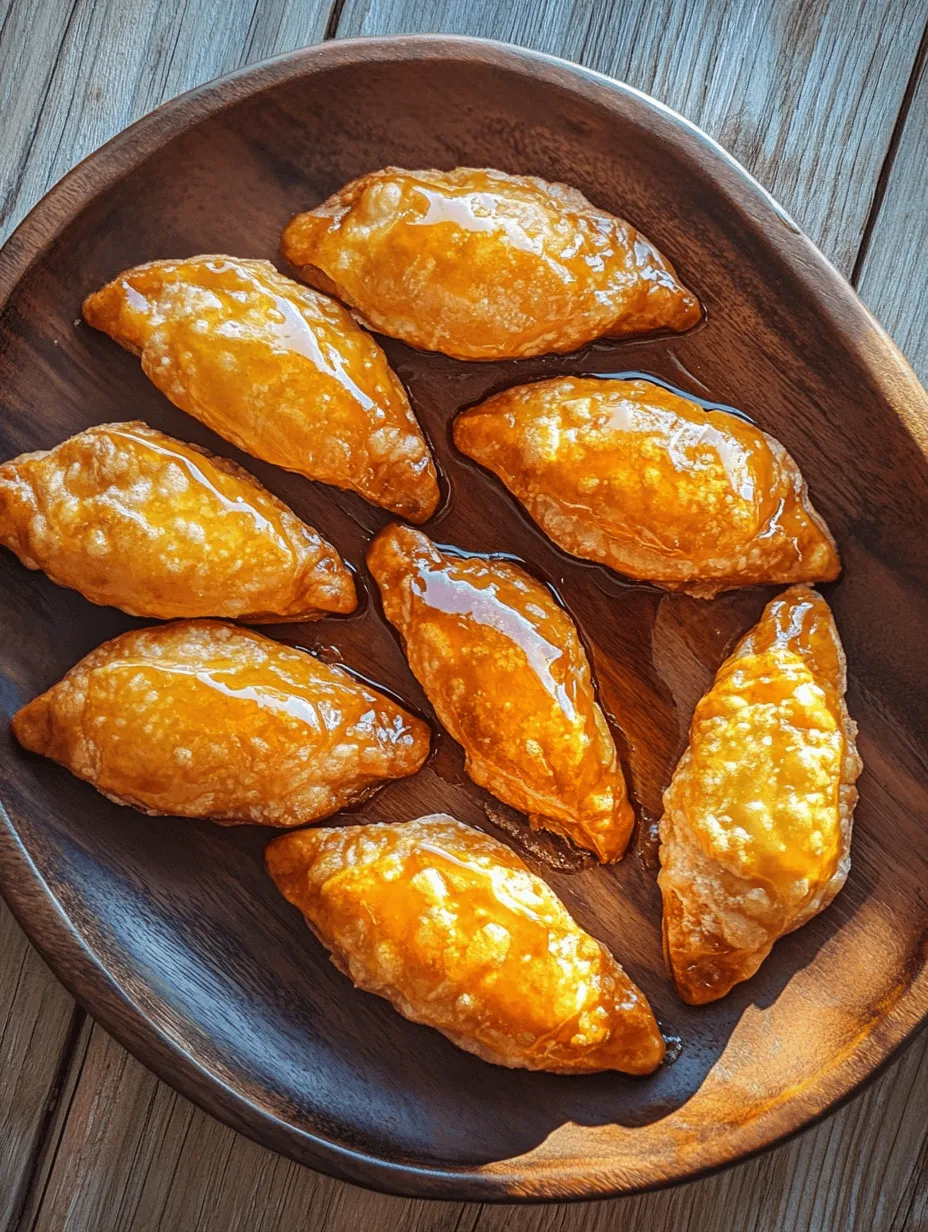Introduction to Tulumba: A Sweet Delight from Middle Eastern Cuisine
Tulumba, or Balah El Sham, is a cherished dessert in Middle Eastern cuisine that has captured the hearts and taste buds of many around the world. This delectable treat features a unique combination of a crunchy exterior and a sweet, syrup-soaked interior, creating a delightful contrast that keeps you coming back for more. Originating from the Ottoman Empire, Tulumba is often enjoyed during festive occasions, family gatherings, and celebrations, symbolizing hospitality and sharing in Middle Eastern culture.
With its roots deeply embedded in the culinary traditions of the region, Tulumba has evolved over the years while maintaining its classic appeal. The dessert is often compared to churros, yet it stands out with its distinctive shape and texture that make it a favorite among dessert lovers. The appeal of Tulumba lies not just in its taste but also in its accessibility; with the right ingredients and some basic kitchen skills, home cooks can easily recreate this beloved treat in their own kitchens.
As we embark on this culinary journey, you’ll find that the recipe for Tulumba is straightforward, inviting both novice and experienced bakers to explore the world of Middle Eastern sweets. The combination of simple ingredients and a few essential techniques will lead you to a batch of perfectly crunchy, syrupy Tulumba that will impress family and friends alike.
Understanding the Ingredients
To create the perfect Tulumba, it’s essential to have a clear understanding of the core ingredients that contribute to its delightful flavor and texture. Each component plays a vital role in ensuring that you achieve the ideal balance between crunch and sweetness.
All-Purpose Flour
All-purpose flour is the foundation of the Tulumba dough, providing the necessary structure and stability. The right type of flour is crucial for achieving the desired consistency; all-purpose flour has the perfect protein content to create a dough that is elastic yet firm enough to hold its shape during frying. Additionally, when mixed properly, the flour allows for the formation of gluten, which contributes to the chewy texture of the final product.
Unsalted Butter
Unsalted butter is an essential ingredient that enhances both flavor and texture in Tulumba. The fat from the butter not only adds richness to the dough but also helps to create a tender crumb. By using unsalted butter, you have complete control over the seasoning of the dessert, allowing you to adjust the sweetness and flavor without the interference of additional salt. When melted and combined with the other ingredients, butter brings a delightful depth that elevates the overall taste of Tulumba.
Eggs
Eggs serve as a binding agent in the Tulumba dough, helping to hold the ingredients together and providing structure. They also add moisture and richness, enriching the final product. The proteins in eggs play a significant role in the dough’s elasticity, allowing it to expand and puff up during frying, resulting in a light and airy texture. When incorporating eggs into the mixture, it’s essential to use them at room temperature for better emulsification, which leads to a smoother dough.
Sugar and Syrup
Sugar is a key component in both the dough and the syrup that soaks the Tulumba. In the dough, sugar adds sweetness and helps to achieve a golden-brown color during frying through the Maillard reaction. The syrup, made from sugar and water, is what truly transforms Tulumba into a sweet delight, soaking into the crunchy exterior and infusing it with flavor. The syrup not only enhances the sweetness but also balances the richness of the butter and eggs, creating a harmonious flavor profile.
Optional Flavorings: Rose Water and Orange Blossom Water
For those looking to elevate their Tulumba, optional flavorings such as rose water and orange blossom water can be incorporated into the dough or syrup. These floral notes add a fragrant touch that is characteristic of many Middle Eastern desserts. A few drops of rose water or orange blossom water can transform your Tulumba into a more aromatic and sophisticated treat, making it even more enjoyable.
Preparing the Syrup: The Sweet Base of Tulumba
Step-by-Step Guide to Making the Syrup
The syrup is a crucial element of Tulumba, providing the signature sweetness and moisture that makes each bite irresistible. Here’s how to prepare the syrup step by step:
1. Combine Ingredients: In a medium saucepan, combine equal parts sugar and water. For a typical batch of Tulumba, using about 2 cups of sugar and 2 cups of water is a good starting point. If you want a sweeter syrup, you can adjust the ratio slightly.
2. Add Lemon Juice: To balance the sweetness and prevent crystallization, add a tablespoon of lemon juice to the mixture. The acidity from the lemon not only enhances the flavor but also helps to keep the syrup smooth.
3. Heat the Mixture: Place the saucepan over medium heat and stir continuously until the sugar has completely dissolved. Once dissolved, allow the syrup to come to a gentle boil.
4. Simmer: Reduce the heat and let the syrup simmer for about 10-15 minutes. This simmering process will help thicken the syrup slightly. You want it to reach a consistency that is syrupy but not overly thick; it should be pourable.
5. Add Optional Flavorings: If desired, you can add a few drops of rose water or orange blossom water to the syrup during the last few minutes of cooking. This will infuse the syrup with delightful floral notes that complement the Tulumba beautifully.
6. Cool the Syrup: Once the syrup has simmered, remove it from the heat and allow it to cool slightly before using. It’s essential that the syrup is warm but not hot when you pour it over the Tulumba, as this ensures proper absorption.
Importance of Sugar, Lemon Juice, and Optional Floral Notes
The combination of sugar and lemon juice is vital for achieving the right balance of sweetness and tartness in the syrup. The lemon juice not only enhances the flavor but also acts as a preservative, helping to prolong the shelf life of the syrup. The optional floral notes, if used, add a layer of complexity that can elevate the overall experience of enjoying Tulumba, making it feel more special and indulgent.
Tips on Achieving the Right Consistency and Flavor Balance
When preparing your syrup, keep an eye on the consistency. If it becomes too thick, you can always add a bit of water to thin it out. The key is to achieve a syrup that coats the Tulumba without being excessively sticky. Taste the syrup as it simmers and adjust the sweetness or acidity as needed—this is your opportunity to make it just right for your personal preference.
Discuss the Cooling Process and Its Impact on the Final Dish
The cooling process of the syrup is critical for the final texture of the Tulumba. A warm syrup allows the dough to absorb the sweetness more readily, whereas a cold syrup could create a barrier, preventing the liquid from soaking in effectively. By allowing the syrup to cool slightly after cooking, you ensure that it maintains its viscosity while still being warm enough to penetrate the dough. This step is crucial for achieving that delightful moist interior that complements the crispy exterior of each Tulumba.
Crafting the Perfect Dough: The Heart of Tulumba
Detailed Instructions on Making the Dough
Creating the dough for Tulumba is a straightforward yet rewarding process. Here’s how to make the perfect Tulumba dough step by step:
1. Melt the Butter: In a saucepan, melt 1 cup (approximately 226 grams) of unsalted butter over medium heat. Once melted, remove it from the heat and let it cool slightly.
2. Heat Water: In a separate pot, bring 1 cup (240 ml) of water to a gentle boil. You can also add a pinch of salt to the water to enhance the flavor of the dough.
3. Combine Ingredients: In a mixing bowl, combine the melted butter and boiling water. Stir to mix well.
4. Add Flour: Gradually add 1 cup (120 grams) of all-purpose flour to the butter-water mixture. Stir continuously with a wooden spoon or spatula until the mixture begins to form a cohesive dough.
5. Incorporate Eggs: Allow the dough to cool slightly before adding the eggs. Incorporate 2 large eggs, one at a time, mixing well after each addition. The dough should become smooth and elastic as you continue to stir.
6. Adjust Consistency: If the dough appears too thick, you can add a tablespoon of water or milk to loosen it slightly. The final consistency should be thick but pliable, allowing it to be piped easily.
Importance of Temperature and Technique
Temperature plays a significant role in the dough-making process. Starting with boiling water ensures that the flour cooks slightly, leading to a better texture. Additionally, incorporating the eggs while the dough is still warm allows for a smoother mixture, promoting better emulsification. This technique is crucial for achieving the light, airy texture that Tulumba is known for.
As you craft your dough, remember to stir vigorously to incorporate air, which will contribute to the puffiness of the Tulumba when fried. The goal is to create a dough that is not only flavorful but also has the right texture to hold its shape during frying.
With these foundational steps and insights into the ingredients and processes involved in making Tulumba, you are well on your way to creating this delightful Middle Eastern treat in your own kitchen. The combination of thoughtful preparation and attention to detail will reward you with a batch of Tulumba that is sure to impress.

The Significance of Mixing Until the Dough is Smooth and Shiny
Creating the perfect Tulumba begins with the most crucial step: mixing the dough until it achieves a smooth and shiny texture. This process is not just about combining ingredients; it is essential for developing the right consistency that allows the Tulumba to puff up beautifully while frying. When you mix the dough, you’re activating the gluten in the flour, which contributes to the structure of the pastry. A well-mixed dough will have a glossy, elastic quality, which is vital for achieving that signature Tulumba look and feel.
Moreover, a smooth and shiny dough is indicative of an even incorporation of air, which will help the pastries rise as they cook. This aeration is key to ensuring that each piece of Tulumba has a light and airy texture on the inside, contrasting with the crispy exterior once fried. Therefore, take your time during this step; patience will reward you with delightful results.
Exploring the Role of Eggs in Achieving the Desired Texture
Eggs play a pivotal role in the composition of Tulumba, contributing not only to the flavor but also to the texture and structure. The proteins in eggs coagulate when heated, providing stability to the pastry and aiding its rise. In addition, the emulsifying properties of eggs help bind the fats and water in the dough, which leads to a tender and moist interior.
When adding eggs to your mixture, it’s important to incorporate them one at a time, ensuring that each egg is fully absorbed before adding the next. This gradual incorporation allows you to monitor the dough’s consistency and adjust accordingly. If the dough feels too wet or too dry, you can make minor adjustments with flour or water as needed. The result is a Tulumba that boasts a delightful balance of texture, with a soft, moist inside complemented by a crispy exterior.
Frying the Tulumba: Achieving the Perfect Golden Brown
Guidelines for Frying the Tulumba
Frying Tulumba is an art that requires attention to detail to achieve that perfect golden brown exterior. Begin by preparing your frying station: fill a deep pot or fryer with oil, ensuring there is enough space for the dough to expand as it cooks. It’s essential to use a neutral oil with a high smoke point, such as vegetable or canola oil, to ensure the best flavors without imparting any unwanted tastes.
Ideal Oil Temperature and Frying Techniques
Before adding your Tulumba to the oil, it’s crucial to heat it to the right temperature. The ideal range for frying is between 350°F to 375°F (175°C to 190°C). You can test the oil’s readiness by dropping a small piece of dough into it; if it sizzles and rises to the surface, the oil is ready for frying.
Frying in small batches is essential to maintain the oil temperature and ensure even cooking. Overcrowding the pot can lower the temperature, resulting in greasy and unevenly cooked pastries. Carefully place the Tulumba into the hot oil, allowing them room to expand as they fry.
Importance of Cooking in Batches to Ensure Even Frying
Cooking in batches not only helps maintain the ideal oil temperature but also allows you to monitor the frying process closely. As you fry, turn the Tulumba occasionally using a slotted spoon to ensure they brown evenly on all sides. The frying process typically takes about 4-5 minutes, depending on the size of each piece. Watch for a deep golden color, as this indicates that the exterior is crispy and the inside is cooked through.
Tips for Identifying When the Tulumba is Perfectly Cooked
The right color is a significant indicator of doneness, but you can also use texture as a guide. When the Tulumba is perfectly cooked, it should feel light and airy when lifted from the oil. If you’re unsure, you can break one open to check if it’s cooked through. The interior should be moist but not doughy, with no raw batter present. Once fried, transfer the Tulumba to a plate lined with paper towels to drain excess oil before soaking them in syrup.
Soaking the Tulumba: The Final Touch
Detailed Description of the Soaking Process in Syrup
Soaking Tulumba in syrup is the final step that transforms these pastries into a delightful dessert. The syrup, typically made from sugar, water, and a hint of lemon juice or rose water, adds sweetness and enhances the overall flavor profile. Once the Tulumba have cooled slightly after frying, they should be submerged in the syrup for optimal absorption.
Timing and Technique for Achieving Optimal Flavor Absorption
To ensure that your Tulumba absorbs just the right amount of syrup, allow them to sit in the syrup for about 5-10 minutes. The warm pastry will soak up the syrup, creating a moist and flavorful dessert. Be careful not to over-soak, as this can lead to overly soggy Tulumba. Instead, aim for a balance where the exterior is sticky and sweet, while the inside remains light and airy.
Discussing How the Warmth of the Tulumba Enhances Syrup Adherence
The warmth of the Tulumba is crucial in the soaking process. When the pastries are slightly warm, they create a gentle steam that opens up the pastry, allowing the syrup to penetrate deeper. This enhances the overall flavor and ensures that each bite is imbued with the sweet syrup, creating that signature Tulumba experience.
Serving Suggestions: Enjoying Tulumba at Its Best
Ideas for Serving Tulumba as a Dessert or Snack
Tulumba can be enjoyed in various ways—whether as a dessert after a hearty meal, a sweet snack, or even as part of a festive celebration. Serve them warm for the best experience, and consider placing them on a beautiful serving platter to showcase their golden brown color and syrupy sheen.
Pairing Suggestions with Beverages or Additional Accompaniments
Tulumba pairs wonderfully with a variety of beverages. A cup of strong Turkish coffee or a soothing cup of mint tea complements the sweetness of the Tulumba perfectly. For a refreshing twist, consider serving them alongside a glass of cold milk or yogurt drink. You can also add a sprinkle of chopped pistachios or walnuts on top of the Tulumba for an extra crunch and a pop of color.
Presentation Tips for a Visually Appealing Dish
To make your Tulumba presentation even more appealing, arrange them neatly on a serving dish and drizzle some additional syrup over the top. You can garnish with a dusting of powdered sugar or a sprinkle of cinnamon for added flavor. A few fresh mint leaves can also add a touch of elegance and freshness to the presentation.
Conclusion: Embracing the Sweetness of Tulumba
Making Tulumba is not just about creating a delightful pastry; it’s an experience that connects you with the rich cultural heritage of Middle Eastern cuisine. The joy of preparing these sweet treats, from mixing the dough to frying and soaking them in syrup, brings a sense of accomplishment and warmth.
Tulumba embodies the essence of sharing and celebration, often enjoyed during gatherings and special occasions. By sharing this recipe with family and friends, you foster a sense of community around food, allowing everyone to indulge in the sweet delights of this traditional dessert. So, gather your ingredients, roll up your sleeves, and embark on this culinary journey that promises to bring sweetness and joy to your kitchen and beyond.



